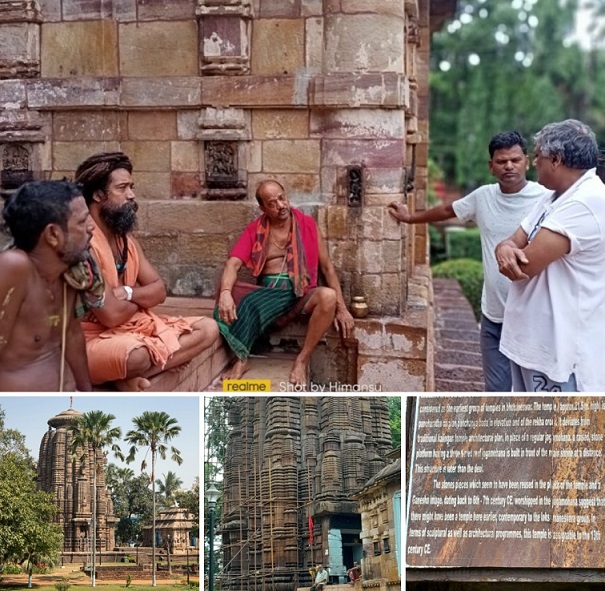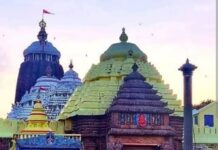
By Anil Dhir
BHUBANESWAR: Nakula Mohapatro, the servitor, was still in a state of shock. He was in the Roshaghara, the kitchen where the Prasad for the deity is cooked, when the bolt of lightning struck the temple. He was thrown back from the chair. Bauri Panda, the priest was inside the Garbhagriha, along with a few devotees. He recounted how the whole temple shook and the big boom still reverberated in his ears. It had been a very close shave for the devotees and the servitors present during the strike.
The 9th Century CE Rameswar Temple, built during the early years of the Somavamsi rule, is a marvellous temple of the Kalingan School of Architecture. Built of sandstone blocks, the temple is considered as an example of the transitional phase of the Kalinga Temple style. As often the case with many of the early period temples of Bhubaneswar, the Rameswar Temple too has many myths and legends associated with it. The temple is named after Lord Rama, it is believed that he had a short sojourn here along with Lakshman and Sita when they were on the way to Ayodhya after their victory over Ravana.
The temple was already under repairs and an iron scaffolding had been put up on the south face. At 10.a.m. on the 15th July, following a thunder storm, lightning struck the top of the temple, knocking down the crown, called the Dadhinauti. It split the rounded carved stone block into smithereens, pieces of which scattered and lay at the base. The Archaeological Survey of India (ASI) officials rushed to the spot and took stock of the situation. They will soon replace the spire with another small dome on the original lines.
To mitigate the risks associated with lightning strikes, many Hindu temples have been installed with lightning protection systems. These systems typically include lightning rods or conductive materials installed on the temple spires. This helps to channel the electrical energy of a lightning strike safely into the ground, minimizing the potential damage to the structure and its occupants. For the Rameswar lightning strike, there should be no blame game. Lightning has struck more than 500 temples in the last decade, causing major damage. Even temples with lighting arrestors have seen major damage. It is important to note that lightning is a natural phenomenon and can still occasionally strike tall structures, despite protective measures.
The 2020-21 Annual Lightning Report published by the non-profit Climate Resilient Observing Systems Promotion Council (CROPC) recorded a 34% jump in lightning strikes within a year. A later 2014 study by scientists at the University of California, found that lightning strikes in the USA increase by 12% for every degree of rise in the global average air temperature. The CROPC data also said that India is already experiencing an alarming rise in lightning strikes.
Prafulla Swain, a servitor of the Lingaraj temple is of the opinion that lightning arresters should be affixed on all the temples. With severe climate change occurring in the State, lightning strikes have phenomenally increased. Swain also said that the authorities should ensure that the lightning protection system installed in various temples of the Old Town should be inspected by a qualified lightning protection specialist every two to five years. While devotees and priests have faith that their temples will be divinely protected from lightning, they should heed the dictum “Pray as though everything depends on God. Work as though everything depends on you.”
(The writer Mr Anil Dhir , is an Eminent Historian, Researchers on Culture and Ancient Heritage and senior Member , INTACH, Odisha. Views expressed are personal)


























